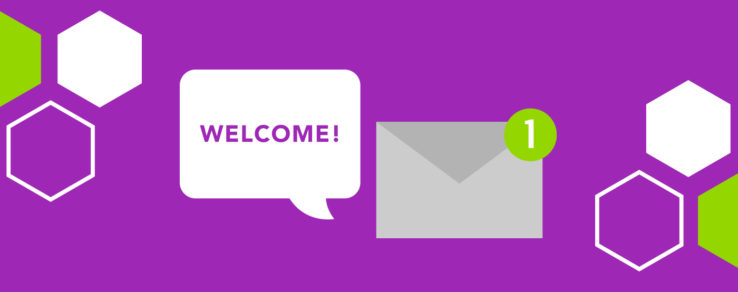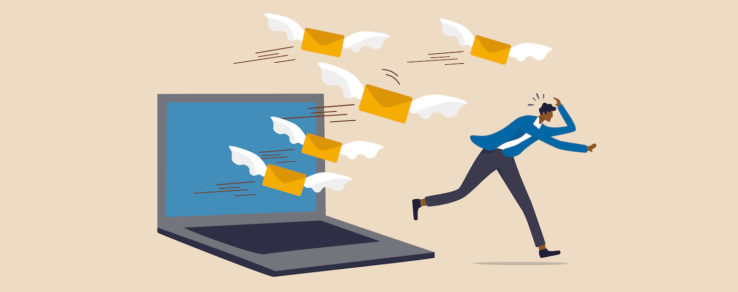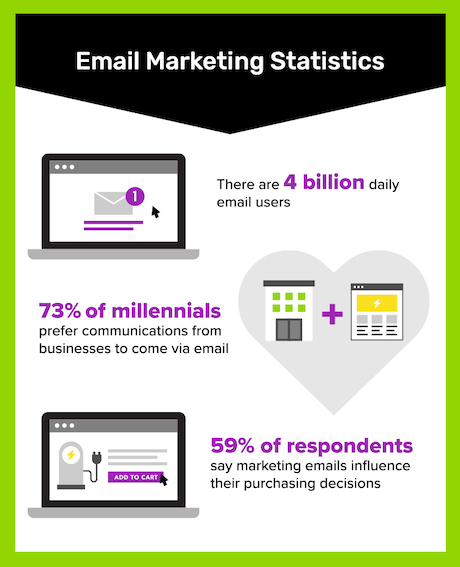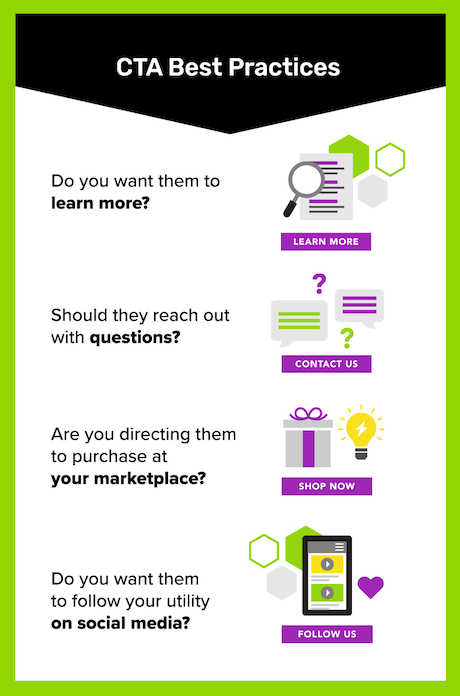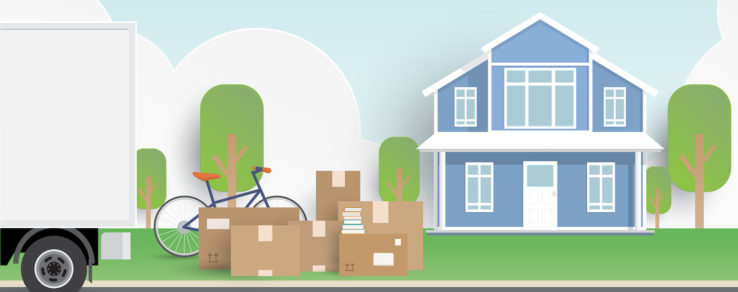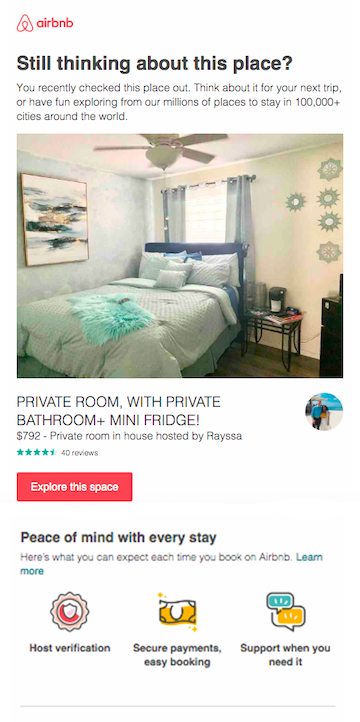For utilities, perfecting the welcome message is key to building stronger digital customer relationships. Utility welcome messages are arguably the most important customer touchpoint, setting the stage for future communications and laying the foundation for long-term engagement.
Companies in every industry are strategic about welcoming new customers, whether it’s a food delivery service like Hello Fresh or a vacation rental site like Airbnb. Just like these companies, utilities need to onboard customers immediately upon starting service.
“Whether you become a bank customer or a member of a retail loyalty program, that company is communicating with you at the beginning stages,” says Susan Kownacki, Vice President of Account Services with Questline Digital. “If you don’t have a good relationship at the start, that relationship isn’t going to last very long.”
New Customer Welcome Emails Have an Immediate Impact
Customers are most receptive to utility outreach at the very beginning of service. According to Questline Digital’s 2023 Benchmarks Report, utility welcome messages reach nearly 71% of all residential customers and over 54% of SMB customers, respectively.
These highly effective messages contain valuable information that customers need to know for a smooth onboarding experience, including My Account setup, billing and payment options, outage resources, safety and conservation education, and program information.
“Use a strategic welcome campaign as a way to connect with your customers at the very beginning of service, since this is when they are most receptive to outreach,” says Maureen Huss, Group Accounts Director at Questline Digital. “Doing so is the first step in building a trusted relationship.”
In today’s landscape of hyper-personalization, consumers expect relevant communications from their utility, just like they do from a streaming service, online retailer or fitness app. New customer welcome emails should be tailored to segmented groups of customers, whether residential customers, business customers or those who have recently moved within the service territory.
For example, residential customers may be interested in home efficiency or conservation programs, while business customers need to know what to do during an outage or power quality issue.
Utility welcome messages should include the following:
- Welcome message to new or moving customers
- Billing and payment options
- DIY tips, energy-saving or water conservation resources
- Outage and storm safety resources
Each utility welcome message should educate customers on various programs and services, answer commonly asked questions, provide available resources and prompt customers to take action, such as enrolling in paperless billing or autopay, signing up for outage text alerts or setting up their My Account.
“There is an art and science to a welcome campaign,” Kownacki says. “The content, the timing, the cadence — everything mirrors the new customer experience. Each email is an opportunity to introduce new and moving customers to their utility’s offerings and gather data on what customers care about.”
New customer welcome emails are also vital for future customer engagement. According to Questline Digital benchmarks data, customers who open at least one welcome message are more likely to engage with future utility email communications. In fact, customers who have opened at least one welcome message are 30% more likely to engage with a program promotion email.
Additionally, a strategic utility welcome message can help utilities improve future communications by better understanding customer preferences. For example, if a customer clicks on links to your electric vehicle resources, you can send them subsequent communications about EV incentives and rebate programs.
How to Welcome New Residential Customers
For residential customers, it’s important for utilities to show appreciation and welcome them to the community. This goes a long way toward showing the human side of a utility and building long-term customer satisfaction.
After the initial welcome, utility welcome messages should focus on what customers care about most at the start of service: creating an account and establishing their preferred billing and payment methods.
New customer welcome emails should also showcase your utility as a trusted resource and expert. This is where residential customers benefit from energy efficiency tips, water conservation advice, helpful outage resources and programs to save on their bills.
“A welcome series is necessary to meet utility customers where they are in the digital space,” Kownacki says. “It’s about managing the relationship with customers through well-timed engagement upfront and then continuing that relationship with email newsletters, content marketing and other best practices to build long-term customer satisfaction.”
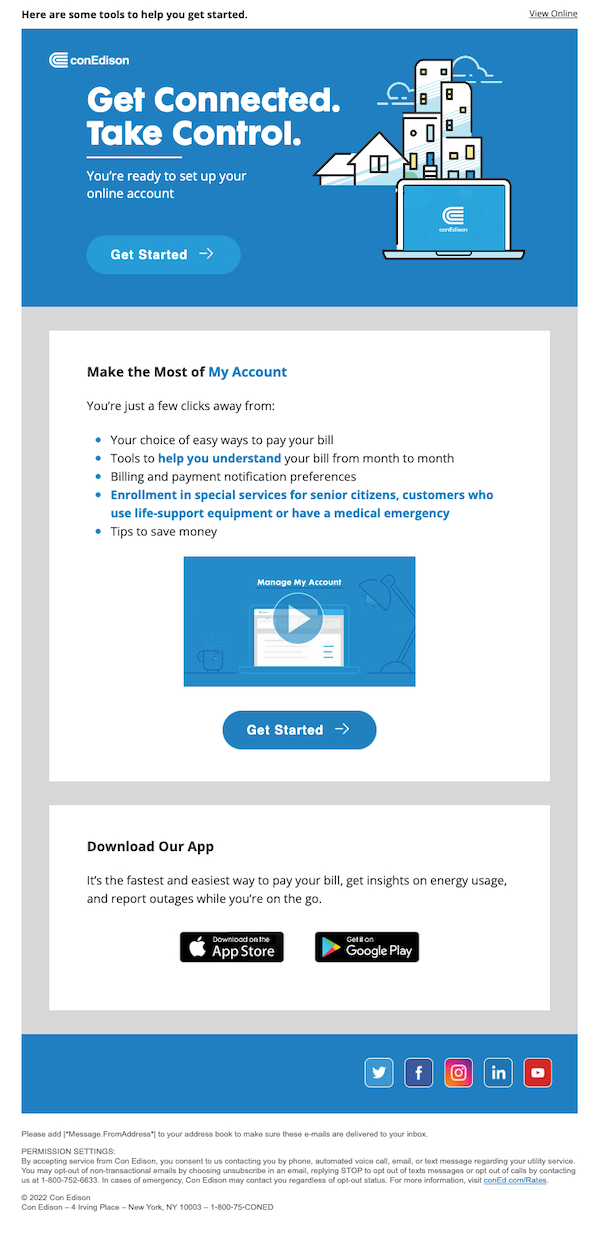
In this welcome email from Con Edison, the utility makes it easy for customers to know exactly what is being asked of them: to set up their My Account. Utility welcome messages should be clear, concise and easy to understand. The use of video also improves customer engagement with the message and provides more detailed information on how to make the most of My Account.
“Video is really good at simplifying topics or concepts that are easier to show than describe,” says Matt Irving, Questline Digital’s Creative Director of Video Content.
In their second welcome email, Rockland Electric Company in New Jersey encourages residential customers to sign up for outage text alerts and download the mobile app. The headline, “We’ll Help You Weather the Storm!” lets customers know that their utility is there for them.
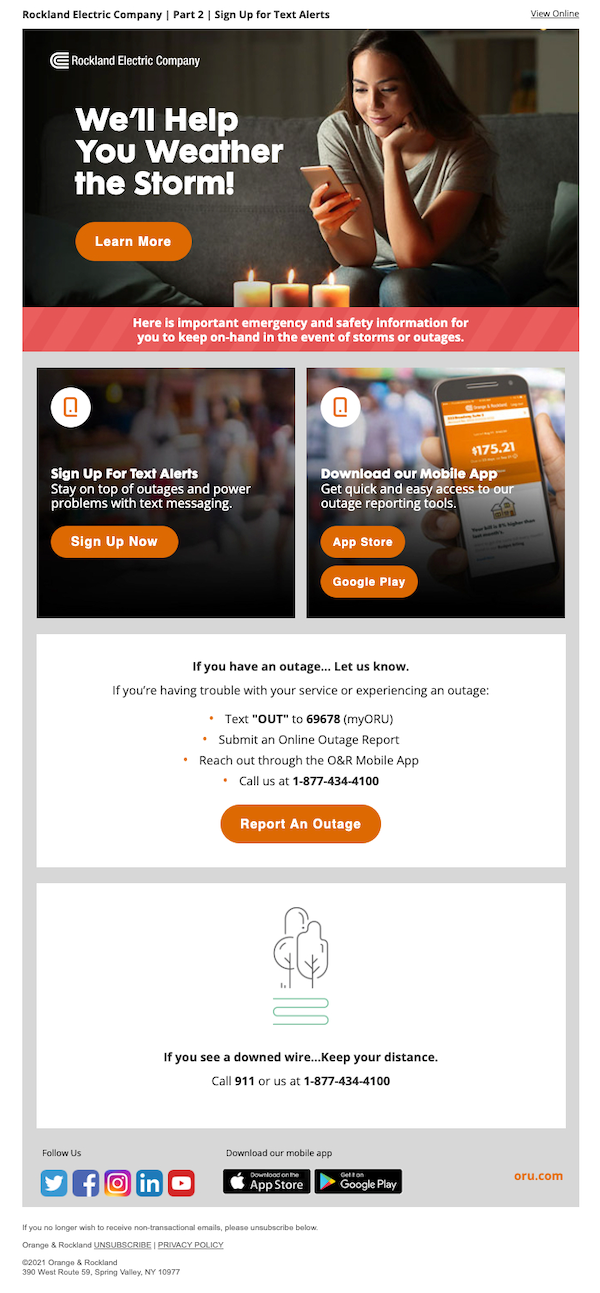
This utility welcome message also serves another purpose — better understanding what customers are interested in communicating via mobile device as well as which customers have Apple versus Google devices. With these two important pieces of information, Rockland Electric Company can enhance future communications with customers.
Welcome Emails for New Business Customers
Welcoming business customers requires a unique approach, as these busy customers are inundated with everyday priorities. Utility welcome messages to business customers must take place every time a workplace transition occurs. As a result, continuity can be a challenge for key account managers.
“I think sometimes electric service can be a secondhand thought for businesses. It’s not a priority as long as their lights are on,” says Chad Brousseau, Business Accounts Manager at Cass County Electric Cooperative. “Businesses often don’t think of us until there is a power interruption or other issue. That’s why it’s important to build those trusted relationships and let them know how we can be of service.”
Each new customer welcome email should center around a specific topic that business customers need to know, such as billing and payment resources, My Account enrollment, outage resources and energy efficiency programs. “This proactive outreach provides business customers with answers to the questions that they have yet to ask,” Huss explains.
Welcome messages for business customers should include:
- Welcome message and how to set up My Account
- Explanation of billing and payment options
- Prompts to sign up for newsletters and/or programs
- Resources to help businesses save energy and water
The initial welcome messages should encourage My Account enrollment and ensure businesses are set up with their preferred billing and payment option. Each utility welcome message should provide value to business customers and connect them with all the resources they need to successfully set up their utility service.
This is also an opportunity to uncover segmentation data, like industry and interests, to shape future business customer experiences.
“Business customers are extremely busy, and they don’t want to waste time with communications they don’t see as relevant to their operations,” says Brian Lindamood, Questline Digital’s Vice President of Marketing and Content Strategy. “By collecting data and listening to preferences during a welcome campaign, you can tailor future interactions to meet each customer’s specific needs. It’s the best way to position your utility as a helpful resource that supports business customers with information that’s relevant to them.”
Building Connections with Utility Welcome Messages
New customer welcome emails are an essential touchpoint, helping to begin the customer relationship and set the stage for future communications. With the right welcome strategy, your utility can go a long way to building strong digital relationships and becoming a trusted resource for all of your customers.
